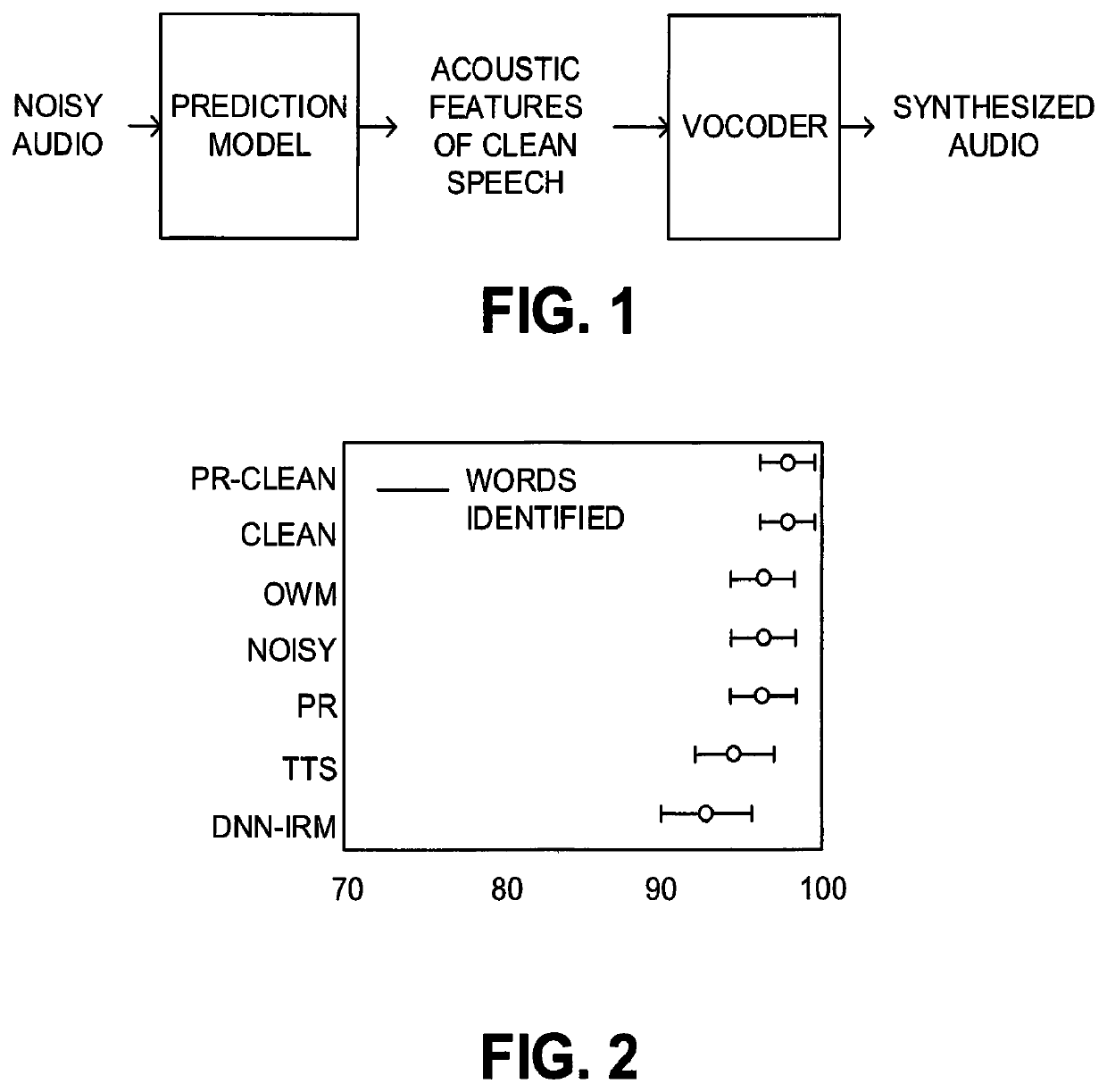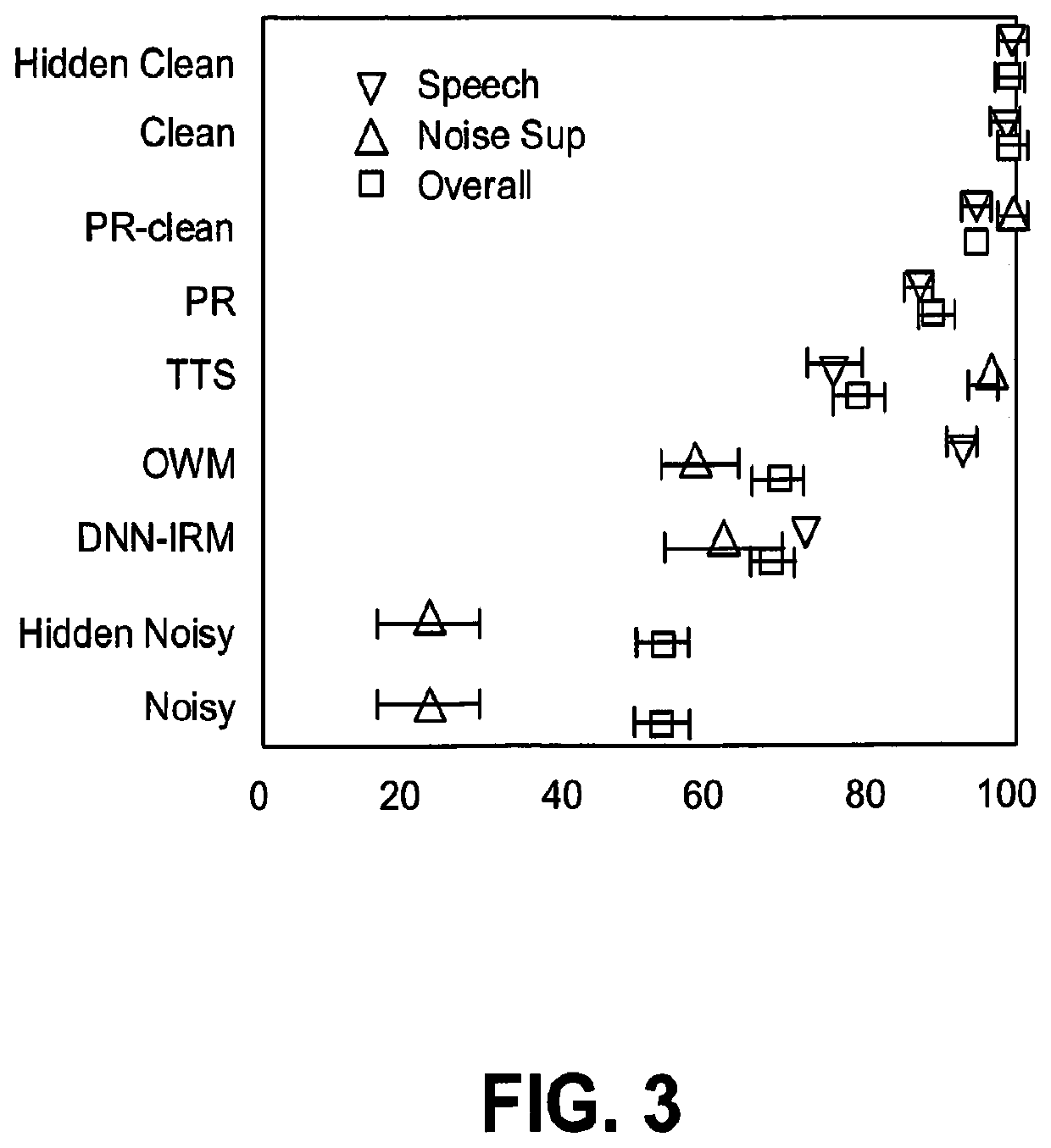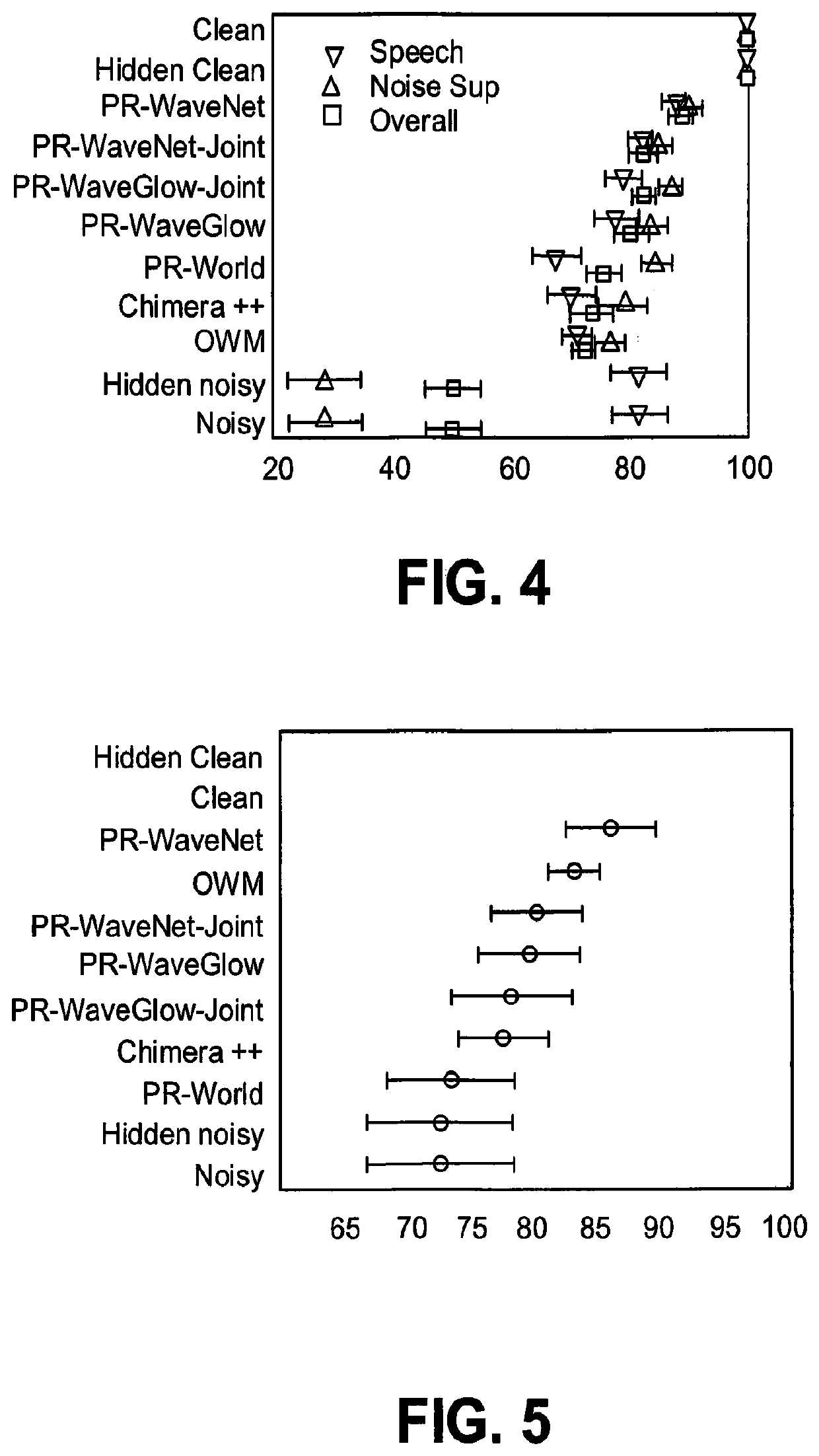Method for extracting speech from degraded signals by predicting the inputs to a speech vocoder
- Summary
- Abstract
- Description
- Claims
- Application Information
AI Technical Summary
Benefits of technology
Problems solved by technology
Method used
Image
Examples
experiment 1
pendence of Neural Vocoders
[0076]WaveGlow and WaveNet were tested to see if one can generalize to unseen speakers on clean speech. Using the data described above, both of these models were trained with a large number of speakers (56) and test them on 6 unseen speakers. Their performance was compared to LPCNet which has previously been shown to generalize to unseen speakers. In this test, each neural vocoder synthesizes speech from the original clean acoustic parameters. Synthesis quality was measured with objective enhancement quality metrics consisting of three composite scores: CSIG, CBAK, and COVL. These three measures are on a scale from 1 to 5, with higher being better. CSIG provides and estimate of the signal quality, BAK provides an estimate of the background noise reduction, and OVL provides an estimate of the overall quality.
[0077]LPCNet is trained for 120 epochs with a batch size of 48, where each sequence has 15 frames. WaveGlow is trained for 500 epochs with batch size 4...
experiment 2
pendence of Parametric Resynthesis
[0079]The generalizability of the PR system across different SNRs and unseen voices was tested. The test set of 824 files with 4 different SNRs was used. The prediction model is a 3-layer bi-directional LSTM with 800 units that is trained with a learning rate of 0.001. For WORLD filter size is 1024 and hop length is 5 ms. PR models were compared with a mask based oracle, the Oracle Wiener Mask (OWM), that has clean information available during test.
[0080]Table 7 reports the objective enhancement quality metrics and STOI. The OWM performs best, PR-WaveGlow performs better than Wave-U-Net and SEGAN on CSIG and COVL. PR-WaveGlow's CBAK score is lower, which is expected since this score is not very high even with synthetic clean speech (as shown in Table 6). Among PR models, PR-WaveGlow scores best and PR-WaveNet performs worst in CSIG. The average synthesis quality of the WaveNet model affects the performance of the PR system poorly. PR-WORLD and PR-LP...
PUM
 Login to View More
Login to View More Abstract
Description
Claims
Application Information
 Login to View More
Login to View More - R&D
- Intellectual Property
- Life Sciences
- Materials
- Tech Scout
- Unparalleled Data Quality
- Higher Quality Content
- 60% Fewer Hallucinations
Browse by: Latest US Patents, China's latest patents, Technical Efficacy Thesaurus, Application Domain, Technology Topic, Popular Technical Reports.
© 2025 PatSnap. All rights reserved.Legal|Privacy policy|Modern Slavery Act Transparency Statement|Sitemap|About US| Contact US: help@patsnap.com



